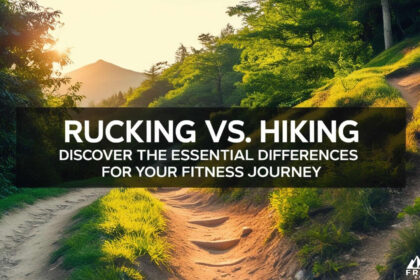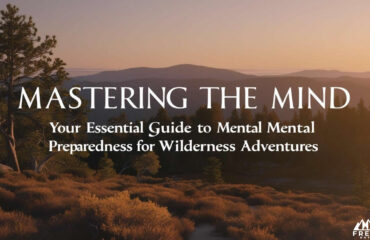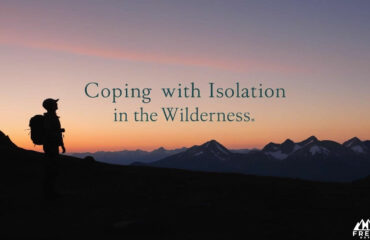
Explore the essential differences between rucking and hiking, including their purposes, health benefits, gear recommendations, and safety tips for outdoor enthusiasts.
Introduction to Rucking and Hiking
Rucking is defined as walking with a weighted backpack, a practice that originates from military training, while hiking typically involves walking on trails for leisure and enjoyment. Both activities are effective for promoting physical fitness, but they differ significantly in intensity and purpose. Rucking focuses on load-bearing exercise, encouraging participants to carry weights that enhance muscular strength and cardiovascular fitness. For instance, a person may ruck with a backpack weighing 20-60% of their body weight, which not only builds strength but also improves posture and back health by promoting proper shoulder alignment. On the other hand, hiking is often praised for its therapeutic benefits, as it allows individuals to immerse themselves in nature, contributing to improved mental health.
Rucking also has a unique appeal due to its versatility; it can be done on various terrains and is accessible to individuals of varying fitness levels. The added weight in rucking provides a different challenge compared to hiking, which is primarily about enjoying scenic views and moderate exercise. Therefore, while both activities offer substantial health benefits, they cater to different fitness goals and preferences.
Key Differences in Purpose and Intensity
The main difference between rucking and hiking lies in their intensity and the load carried. Rucking typically involves carrying loads of 20-60% of one’s body weight, which is aimed at enhancing physical capability over varied terrain. This intensity translates to a higher calorie burn, as rucking can burn up to three times more calories than regular walking, making it a more rigorous workout. For example, a person rucking with a 30-pound pack may find that they are not only strengthening their muscles but also significantly increasing their cardiovascular endurance compared to a casual hike.
In contrast, hiking generally requires carrying less percent of body weight, focusing more on leisure and moderate exercise. The pace of hiking is usually slower, allowing individuals to enjoy their surroundings without the added challenge of carrying heavy weights. Rucking often includes uphill terrain or stairs, which further elevates its cardiovascular and muscular intensity. As a result, those who engage in rucking may find their overall fitness levels improve faster than those who primarily hike.
Health Benefits of Rucking vs. Hiking
Both rucking and hiking offer numerous health benefits, but they do so in different ways. Rucking is excellent for improving muscular strength, cardiovascular fitness, and calorie expenditure, which can significantly aid in weight loss. The added weight challenges the body, enhancing overall endurance and physical toughness. For example, individuals who ruck regularly report significant improvements in their ability to tackle challenging hikes, as their bodies become accustomed to carrying weight over various terrains.
On the other hand, hiking is particularly beneficial for mental well-being. It promotes lower body musculature development and provides stress relief through immersion in natural settings. Research has shown that spending time in nature can lead to reduced stress levels and improved mood, making hiking a popular choice for those seeking mental health benefits. While rucking focuses on physical capabilities, hiking emphasizes the therapeutic aspects of exercise, appealing to those who value both fitness and mental health.
Recommended Gear for Rucking and Hiking
When it comes to the gear needed for rucking and hiking, there are some distinct differences. Essential gear for rucking includes a sturdy rucksack, weighted plates, and proper footwear. It’s crucial for ruckers to distribute weight correctly in their backpacks to prevent joint strain and injuries. A beginner might start with a weight of 10-20 pounds, gradually increasing it as their strength and endurance improve.
Hiking, on the other hand, primarily requires good-quality footwear, moisture-wicking socks, and weather-appropriate clothing. Proper hiking gear enhances comfort and reduces the risk of blisters or injuries during long hikes. Additionally, trekking poles can provide stability and support for hikers navigating difficult terrain, making them a valuable addition to hiking gear. While rucking gear can be minimal, ensuring that one has the right equipment is essential for both activities to maximize safety and enjoyment.
Popular Trails and Events for Rucking and Hiking
Rucking can be performed on various tracks, trails, or even stairs, which enhances its versatility as a fitness method. This adaptability allows individuals to incorporate rucking into their daily routines, whether in urban settings or natural landscapes. For example, many urban parks provide suitable environments for rucking, making it accessible to those who may not have immediate access to hiking trails.
Hiking trails, on the other hand, offer scenic views and therapeutic benefits, with popular locations varying by region. Many hiking clubs organize group hikes, fostering social connections while promoting outdoor activity. Additionally, rucking events, such as GORUCK challenges, provide opportunities for community engagement and fitness, allowing participants to experience the camaraderie of rucking with others. Both activities encourage social interaction and outdoor engagement, contributing to a sense of community among enthusiasts.
Safety Tips for Rucking and Hiking
Safety is paramount in both rucking and hiking. Gradually increasing ruck weight by 2.5-5 kg weekly is essential to avoid joint pain and injuries, especially for beginners. Proper hydration is also crucial, as both activities demand endurance and stamina. It’s important to take regular breaks during long sessions to prevent fatigue, which can lead to accidents.
Investing in appropriate footwear and using moisture-wicking socks can help prevent blisters during long hikes or rucks. Additionally, paying attention to weather conditions and adjusting plans accordingly is vital for safety during outdoor activities. Utilizing a buddy system when hiking or rucking in remote areas can enhance safety and accountability, providing support if needed.
Summary of Rucking and Hiking Benefits
Both rucking and hiking can be adapted to suit various fitness levels, making them accessible to beginners. Choosing between the two activities ultimately depends on personal fitness goals, terrain preferences, and desired intensity levels. Rucking is more intense and physically demanding, while hiking offers a slower-paced, nature-focused experience. Incorporating both activities into a fitness routine can enhance overall health and fitness outcomes, as each offers unique benefits.
Engaging in community events related to either rucking or hiking can improve motivation and consistency, encouraging individuals to stay active. Both activities provide fulfilling ways to connect with nature while promoting physical and mental well-being, making them excellent choices for anyone looking to enhance their fitness journey.




